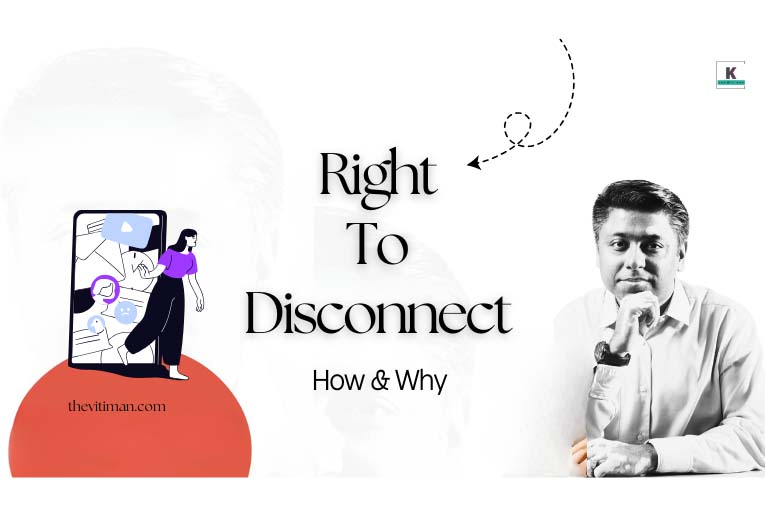Right to disconnect is a very tricky topic. Why? Because although it is important for people to have work-life balance, and I have also always propagated to have work-life balance, at the same time there is a very thin line when it comes to being responsible and being casual about your work.
What I am going through currently in my office
I see a lot of people, especially Gen Z, who feel that they have the right to disconnect per se. They run away from the responsibilities. In India, we are in a fast-moving economy with fast moving businesses.
Sometimes telephone calls come at 9 a.m., sometimes at 9 p.m., when I am forced to wonder if we are disconnecting from the job we are doing for a normal work-life balance or if we are just casually avoiding our responsibilities.
That’s my first point. Now coming back to Right to Disconnect. Yes, of course there should be certain rules around the right to disconnect. But I am not sure if India is ready for that kind of strict rule around the right to disconnect.
Until that happens, the most important aspect is how we ensure certain things that we do. Under such circumstances, how can you build trust with your management in order to feel the right kind of work-life balance in your life?
Notifications are very important
Foremost, I feel that notifications are very important things in this regard. It is high time people understood the channels for conversation.
For example, emails need not be responded to immediately. So, you can make sure that emails are not notified to your phone.
You can check your emails at regular intervals, and once you have logged out of your office, you can check your email the next day. Nobody will force you to respond to emails after your work hours.
WhatsApp messaging is another important touchpoint. If you ask me, I have stopped notifications for WhatsApp and all other communication mediums like SMS, Slack, or whatever. Result? I don’t get notified.
Of course, I look at my messaging apps or see messages whenever I want. Normally, I do not look at messages after I leave office around 7–8 in the evening; sometimes, I don’t look at messages until late at night. During this period, if I see there have been some messages that need urgent attention, I respond to them.
So, you must select your timelines for checking your messages. Emails can be done next working day. WhatsApp and other communication services can happen at a 2- or 3-hour difference. That ok. And of course, emergencies can be dealt with. So that’s one thing.
Developing hobbies to disconnect from work
You may certainly develop or nurture certain hobbies or interests in sports. Depending upon how much time you can spare for yourself, habits like gym, cycling, reading, and walking-jogging can be seriously looked into during which time you can put your phone on silent.
For me, my phone gets silent down around 10 pm, and I turn it on only in the morning, around 6. Now a days, you get automatic settings in your phones. So, 10 pm to 6 am is the silent time for me.
Any emergency phone calls or contacts that I have added from my family make the phone buzz, but that’s rare. Certainly, this is a fine way of disconnecting.
Setting boundaries at the workplace
Another thing that you can do is set some boundaries at your workplace. Once you start doing that, discuss it with your management, peer groups, people you report to, and people who report to you.
Everyone will understand and appreciate your right to disconnect when you take them into confidence. You can ensure that these things are spoken about; for example, you missed out on some messaging and someone says that you haven’t responded to messages. Then, you can say that you’ve certain boundaries wherein you don’t look at work messages after work hours. This way, you can build trust over a period of time.
Four Key Takeaways:
- Know Your Role: Recognize your responsibilities and decide when to disconnect from work.
- Set Notifications: Establish guidelines for your response times to manage expectations.
- Build Good Habits: Create routines that allow you to step away from work life.
- Establish Boundaries: Communicate limits with your team and managers—most will respect that non-urgent matters can wait until the next day.




